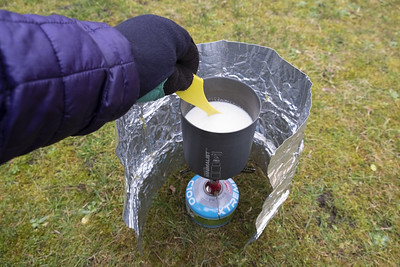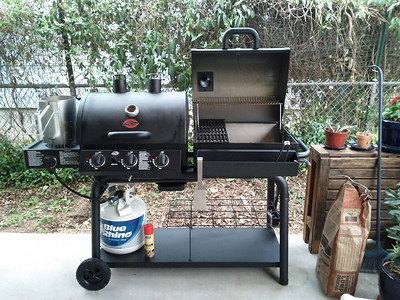
Imagine standing on a high mountain peak, surrounded by breathtaking views, with the chilly wind blowing in your face. In such an awe-inspiring yet harsh environment, the performance of your portable stove becomes a critical factor in ensuring a warm meal or a much-needed hot drink. This is just one example of why understanding fuel performance at high altitudes is so important.
Butane, a popular fuel choice for portable stoves and lighters, is known for its convenience and ease of use. But how does it fare when you venture high above sea level?
In this article, we’ll explore the ins and outs of using butane at environment, comparing its performance with other fuels, and providing valuable insights for those who rely on portable stoves in elevated environments.
So, whether you’re a mountaineer, outdoor enthusiast, or researcher, we invite you to join us on this guide and discover the secrets of butane in the thin air.
Here’s an article about butane may explode under pressure.
| Items | Price |
|---|---|
 |
|
    |
|
    |
The Physics of Butane
To understand the behavior of butane at high altitudes, we must first delve into the fundamental relationship between altitude, pressure, and temperature. As you ascend, atmospheric pressure decreases due to the reduced weight of the air above you.
This decrease in pressure directly affects the boiling point of liquids, including butane. Moreover, temperature typically drops as you gain elevation, further influencing fuel performance.
The boiling point of a liquid is the temperature at which it turns into a vapor, a key factor for fuels that need to vaporize before they can burn efficiently. At sea level, butane has a boiling point of approximately -0.5°C (31.1°F).
As you climb higher, the boiling point of butane drops even further due to the decreased atmospheric pressure. This change in boiling point makes it more challenging for butane to vaporize and burn effectively.
It’s crucial to compare butane with other fuels, such as propane and isobutane, to understand how their boiling points and performance at this environment differ.
Propane, another common fuel, has a boiling point of -42°C (-43.6°F), while isobutane’s boiling point is -11.7°C (10.9°F). This means that both propane and isobutane are more likely to vaporize and perform better at higher altitudes compared to butane.
Consequently, many outdoor enthusiasts and professionals opt for stoves that use a mixture of these fuels to ensure optimal performance in elevated environments.
Can The Gas Be Used at This Altitudes?
Butane can be used at high altitudes, but its performance may be affected by factors such as reduced atmospheric pressure and lower temperatures. As altitude increases, the boiling point of butane drops, making it more challenging for butane to vaporize and burn effectively. However, with the right equipment and strategies, it is possible to optimize butane’s performance even in elevated environments.
Choosing a pressure-regulated stove, using blended fuel canisters with propane and isobutane, and employing techniques for efficient stove usage can help overcome the challenges of using butane. Additionally, it is essential to prioritize safety by storing butane canisters properly and being aware of carbon monoxide risks.
Overall, while butane’s performance in this kind of harsh environment can be affected, it remains a popular and convenient fuel option for various activities and professions when used with proper equipment and precautions.
Performance of Butane Stoves
At high altitudes, the performance of butane stoves can be significantly impacted by several factors. Among the most common challenges are inefficient combustion and difficulty lighting the stove.
Reduced atmospheric pressure and lower temperatures can make it harder to ignite the butane, and even when lit, the flame may not burn as consistently or efficiently as it would at lower elevations.
To address these issues, some stove designs have incorporated innovative solutions, such as pressure regulators and preheating mechanisms. Pressure regulators help maintain a consistent gas flow from the fuel canister to the burner, ensuring a steady flame even in challenging conditions.
Preheating mechanisms, on the other hand, focus on vaporizing the fuel more effectively. One common example is a small metal loop that transfers heat from the flame back to the canister, warming the fuel and facilitating its vaporization.
Despite these advancements in stove design, butane stoves still face competition from other fuel types when it comes to performance.
Stoves that utilize a blend of propane and isobutane, for example, tend to offer improved performance due to the lower boiling points of these fuels, which makes them more suitable for use at high elevations. Another alternative is liquid fuel stoves, which burn white gas or other liquid fuels.
These stoves typically feature a separate fuel bottle and burner, allowing them to maintain consistent pressure and heat output, regardless of the altitude. While liquid fuel stoves may be more cumbersome to set up and require occasional maintenance, their reliable performance makes them a popular choice among mountaineers and outdoor enthusiasts.
Safety Considerations When Using Butane at High Altitudes
When using butane at high altitudes, it’s crucial to prioritize safety and adhere to best practices for handling and storing fuel canisters.
Proper storage of butane canisters:
At high altitudes, the reduced air pressure outside the canister can cause the internal pressure to rise, increasing the risk of over-pressurization. To minimize this risk, always store butane canisters in a cool, dry place, away from direct sunlight, and never expose them to temperatures above 120°F (49°C). Additionally, avoid placing canisters near heat sources or in areas where they could be punctured or damaged. When transporting butane canisters, ensure they are upright and secure to prevent accidental leakage or damage.
Carbon monoxide risks and precautions:
Another safety concern when using butane at this elevation is the risk of carbon monoxide poisoning. As you ascend, oxygen levels in the atmosphere decrease, making carbon monoxide more dangerous. Carbon monoxide is a byproduct of incomplete combustion, which can occur when using a butane stove, especially in poorly ventilated spaces.
To reduce the risk of carbon monoxide poisoning, always ensure proper ventilation when using a butane stove, and avoid using it in enclosed spaces like tents or snow caves. Instead, opt for a well-ventilated area or use a specialized tent with built-in vents specifically designed for cooking.
Familiarize yourself with the symptoms of carbon monoxide poisoning, such as headache, dizziness, and nausea, and seek immediate medical attention if you or your companions experience these symptoms. Investing in a portable carbon monoxide detector is another prudent measure for added safety.
Tips for Optimizing Butane Performance
To make the most of butane’s performance, consider the following tips that can help you overcome the challenges associated with using butane stoves in elevated environments:
Choosing the right stove:
Selecting a stove designed to handle the demands of high-altitude conditions can greatly improve your experience. Opt for pressure-regulated stoves that maintain a consistent gas flow, ensuring a steady flame and efficient fuel consumption.
Additionally, consider using blended fuel canisters that combine butane with propane and isobutane. These mixtures take advantage of the lower boiling points of propane and isobutane, providing better performance at high altitudes compared to pure butane.
Efficient usage:
Adopting techniques to maximize the efficiency of your butane stove can make a significant difference in its performance. Use wind protection, such as a windscreen or a natural windbreak like rocks or a snow wall, to shield the stove from gusts that can reduce its heat output.
Insulation techniques, like placing a reflective pad under the stove or using an insulated pot cozy, can also help retain heat and speed up cooking times. Additionally, keep in mind that cooking times may be longer due to the reduced boiling point of water, so be patient and make necessary adjustments.
Planning for fuel consumption:
When preparing for an adventure, take the time to estimate your fuel needs based on the duration of your trip, the number of people in your group, and the type of meals you plan to cook. Always carry extra fuel canisters or consider bringing an alternative fuel source, like a liquid fuel stove, as a backup.
Remember that factors like altitude, temperature, and wind can impact fuel consumption, so it’s better to have more fuel than you think you’ll need. By planning ahead and taking these factors into account, you can ensure a more enjoyable and stress-free experience at this elevation.
Conclusion
In summary, while butane’s performance at high altitudes can be affected by factors such as reduced atmospheric pressure and lower temperatures, it remains a popular and convenient fuel option for various activities and professions.
By understanding the challenges associated with using butane at high altitudes and employing strategies like choosing the right stove, maximizing efficiency, and planning for fuel consumption, it’s possible to optimize butane’s performance and enjoy its benefits even in elevated environments.
The importance of understanding fuel performance cannot be overstated, as it impacts the experiences of mountaineers, outdoor enthusiasts, researchers, and even those in aviation.
This knowledge enables individuals and professionals to make informed decisions about the equipment and fuel they use, ensuring safety, efficiency, and reliability in challenging conditions.
As technology continues to advance, we encourage further research and development in fuel solutions. Innovations in stove design, fuel formulations, and safety measures will undoubtedly contribute to improved performance and safety, enabling more people to explore and thrive in the fascinating world of this kind of environments.


Mike is an experienced propane technician with over 15 years of professional experience in the field. He has dedicated his career to helping customers with their propane needs, from installation to maintenance and repair. Together with Jeremy, he co-founded this website to provide useful information and guidance to customers seeking reliable propane services.






